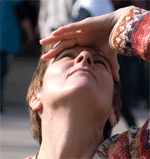Yesterday I returned from the ‘And they all learned happily ever after….. ‘ digital story telling workshop run as part of the University of Gloucestershire’s Pathfinder programme. The workshop was situated in the impressive Centre for Active Learning building . The building design is underpinned by the ‘pedagogic philosophy of active learning’. This was to an extent played out in the format of the workshop where we were engaged in an active story telling ice-breaker (tell your neighbour about your journey to the workshop, then retell the story you were told) and group discussion around what characterises deep reflection using graduated scenarios. This was led by Jenny Moon (see http://www.cemp.ac.uk/research for more information about Jenny’s work and the teaching materials she uses).
We were shown some impressive stories created by individuals and groups of students. Group stories were used as part of a first year induction programme and for group presentations, as part of an accountancy programme, where the stories were later peer reviewed and then formally assessed. For me the individual presentations were particularly powerful e.g. where the authors shared their motivations to study Landscape Design or how involvement in sport had shaped and transformed students’ personal identity.
These stories seemed to be serving a variety of educational purposes:
- to develop presentation skills
- to develop group working skills
- to develop digital literacy
- to develop skills for (critical) reflection e.g. critical incident analysis
- for personal development – making sense of personal experiences
In addition Jenny Moon presented further purposes for story:
- to develop teaching skills
- stories that became scenarios or case studies (fiction and/or non fiction) in professional settings
All stories presented in the workshop were created from an audio commentary recorded using Audacity and still images (obtained from a variety of sources!). The images and audio track were then integrated using Windows Movie Maker.
A number of issues arose from the discussion around these stories:
Copyright and data protection – The need to give guidance to students about how to use third party images legally and the need to obtain appropriate permission from subjects who were being photographed. The need for teaching staff to model good practice when they used images, video or sound in their teaching.
Public or ‘private’ stories? – Some stories were created by individuals for the course tutor for assessment purposes. There was a feeling that a requirement to create stories for a public audience might have constrained the student authors.
Assessment – There was a feeling that new ground was being broken in determining appropriate criteria for assessment. It was acknowledged that assessing the stories in a transparent way was a non-trivial task. There was a general agreement from those practitioners who had used story as part of their courses that it was important to value them as part of the assessment and in a number of cases the stories accounted for 50% of the marks. Jason Ohler has advice on his website for developing a rubric and includes some examples.
Clearly the examples of digital stories that we saw were particularly good examples of student work. I was left wondering what the full range of student work looked like. I also wondered whether some groups of students had a particular affinity for working in this way or if other groups were disadvantaged. Anecdotally the digital story was thought to be enabling for disabled or international students who might be less confident in presenting ‘live’ to their peers.
Overall I think it is worth experimenting with digital story to enhance student learning and perhaps there is also potential for using it as a vehicle to develop digital literacy among teaching staff. However I still have some questions:
1. How much guidance is enough? – given that we want to enable students to get started but not to constrain creativity.
2. Where to start? – with a script, with a set of images, the audio track? It seems that the interplay between the images and the narration is important so perhaps each shape the other?
3. To what extent does the technology used to compile the story influence the nature of the story? The group at the University of Gloucestershire also experimented with Photostory 3 but felt that this constrained the narrative by imposing rather artificial chunking. According to Alan Levine there are at least 50 web 2.0 ways you can tell a story using various free internet based tools. I wonder which are most fit for which purposes?
4. The stories we heard were told via a single voice – I wonder what multiple voices might add? Would it be possible to present stories about the same event from multiple perspectives? Does this then become a kind of role play or rich case study?
5. In what circumstances is it best to use group stories or individual stories?
6. If defining assessment criteria is a challenge how can peer review be included in an equitable way?
7. How does digital story telling link to reflective journals, e-portfolios and PDP?
Overall a useful and thought provoking day! Over the next few months I think I’ll be trying to develop my story telling technique, trying out different technologies for capturing story and experimenting with story for different educational purposes.

Leave a comment